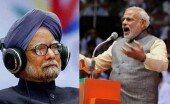More on the Dirty Picture (2011)
Written by Suhas // December 4, 2011 // Media & Popular Culture // 6 Comments
There was much hype over Dirty Picture. Pakistan banned its release, and Ekta Kapoor unleashed upon us a saucy promo which got every Vidya Balan fan hungry, thirsty and desperate for this promising slice of bootylicious cinema. From what could be gathered from an interview with Ekta Kapoor and Vidya Balan on release night, the ladies who watched it found the movie ‘uplifting’ and the men just couldn’t wait for the ‘dirty’ picture. The reviews for Dirty Picture have been especially generous in their praise for the ‘bold’ and ‘balanced’ depiction of a sex symbol of the 80s with the stellar performance of Vidya Balan, not to mention, some over the top efforts at direction by Milan Luthria and script writing by Rajat Arora
Film reviewing in India often lends itself to glorifying films where the heart is in the right place, irrespective of cinematic merit, and the rave reviews received by Dirty Picture are a case in point. Dirty Picture is bold, sexy and in many ways pioneering in Indian cinema, but it is not by any stretch of imagination a great film. Vidya Balan’s performance was laudable but by no means exceptional, and she has not bettered her previous performances by a far margin. Praise for the director and script writer are ill-founded. The story telling was weak, and the film messily edited, and the talents of Naseeruddin Shah and Vidya Balan all but wasted. For anyone who has watched Ishqiya (vastly underrated at the box office), the potential of these two actors together in a movie is obvious, and in stark contrast to what came about in Dirty Picture. We saw unengaging, and black and white characters, the villainous Suryakanth (Naseeruddin Shah) who stereotypes a class of successful men, a devious film critic (Anju Mahendroo) and the duplicitous Ramakanth (Tusshar Kapoor). The saving grace, among all the typecasting seemed to be the role played by Emraan Hashmi – human, flawed, affected and dynamic. A function of his time and the story, something which seemed to miss the characterization of the rest, including ‘Silk’ who were as cut, dry and unengaging as the storyline.
This is especially tragic in light of the material that the producers and directors of the movie had at their disposal – the glamour of 80s cinema, filmmaking in the south Indian film industry, and an extremely sexy protagonist. It goes without saying that on many counts, Dirty Picture has done what hasn’t been done before. It is a biopic of an actress comfortable with her sexuality, who delivers in an industry dominated by men, who discards social mores, and heartily follows her dreams. In a conservative society, what she does, and how she goes about doing it are exceptional. The character sought to be portrayed is difficult, any director and script writer had to continuously refrain from desentisizing their characterisation by unintentionally sleazeballing the protagonist. But as much as critics have liked us to believe so, the balance isn’t all that difficult to strike. And even if it was, to be completely honest, Dirty Picture didn’t really manage to strike it. It is a fairly clean movie, with few outrageous scenes. The Dirty Picture by Ekta Kapoor isn’t as ‘dirty’ as they would have us believe. By calling it that, Ekta Kapoor has pulled off a coup which many (though by no means all) film critics and audiences have bought into.
If not anything, Dirty Picture had the license to be erotic and entertaining, and uplifting for the feministically inclined. It wasn’t erotic by any stretch of imagination, and what it does to reclaim space for women is highly debatable. Silk’s bold unabashed ways and struggles uphold means that few women today may see as worthy of replication, however admirable (in the context of the times). It certainly is entertaining, and as much as we seek to find explanation, there isn’t much more than that to explain the $ 4 million it has made since opening last Friday.






6 Comments on "More on the Dirty Picture (2011)"
If you watched Milan Luthria’s Once Upon a Time in Mumbai, and are a keen observer, you would know that he just played to the galleries. The same seemed to be the outlook when I saw the promos of this latest film. I am glad I have been vindicated as the general verdict seems to be a mediocre movie with a good performance by Balan. A good performance by Balan was a given. There hasn’t been a movie in recent times where she has acted badly from what I remember.
In fact, if you look at the story as a whole, the most important role had to be the one clumsily played by Tusshar Kapoor. His character’s duplicitous nature is what threw silk into here downward spiral which eventually culminated in her demise. Emran’s character though present throughout the movie, has an impact on silk when she had already crossed the threshold of redemption. The fact that such an important role, was played by such an inept actor, was the most disappointing fact of the movie for me, which by even generous standards, was just about above average and nothing more.
Agreed – it’s packaged entertainment, little more.
Hi,
All reviews have missed one glaring gaffe in this movie. The song involving Balan and Hashmi is very unsouth indian. Though the song is good, it is very very alien to the
south indian in tone and tenor.
Trackbacks for this post